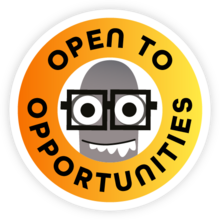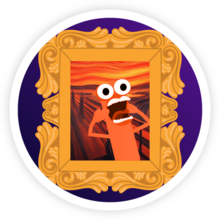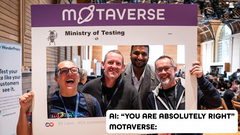Rahul Parwal
Test Specialist
I am Open to Write, Teach, Speak, Mentor, CV Reviews
Rahul Parwal is a Test Specialist with expertise in testing, automation, and AI in testing. He’s an award-winning tester, and international speaker.
Want to know more, Check out testingtitbits.com
Achievements




































Certificates

Awarded for:
Achieving 5 or more Community Star badges
Activity

liked:

Meme inspired by Slack conversations with Nataliia Burmei.

earned:

Lesson 4 of Prompting for Testers

earned:

Lesson 3 of Prompting for Testers

earned:

Lesson 2 of Prompting for Testers

earned:

Lesson 1 of Prompting for Testers
Contributions

after so much waiting and anticipating , I am returning to my career after a full time parenting break.
These 2 years were full of mixed feelings and self-doubts but I owe this community to back...

Self greening is a term used to describe a situation where AI automatically “fixes” or adjusts tests so that they pass, potentially hiding genuine problems that should have caused them to fail. It’s a side effect of AI-driven test maintenance or “self-healing” systems that focus on achieving green (passing) test results, sometimes at the expense of meaningful accuracy or visibility into real issues.Here’s what it looks like:
You run an automated accessibility scan.
The AI finds two issues.
You tell it to keep fixing until tests pass.
It changes the test to expect “2 issues found.”
The test passes.
Now, if a later version adds two new issues, the AI updates the expected count to 4, and the test still passes. You get a clean dashboard. But the product is breaking quietly. Self-greening gives you a false sense of stability. Everything looks green, but the tests are no longer testing anything useful.While AI can be guided or configured to restrict healing to safe areas (like element identifiers or path changes), out-of-the-box implementations often risk self-greening, trading genuine test insight for the illusion of stability.You can reduce self-greening risks by:
Limiting where AI can apply self-healing (for example, only to locators or paths).
Reviewing AI-made changes before merging them.
Tracking the difference between AI-fixed and human-reviewed test results.
Treating “all-green” reports with healthy skepticism.

Rahul Parwal is doing his thing!

Anyone want to pair learn on this with me?
I am thinking to start on this one from next week. It looks practical and a good starting point to try out stuff.
Link: bit.ly/MCPTESTERS

Some mornings start with coffee ☕, but today mine began with a copy of “The Testing Planet – October Edition” by the Ministry of Testing—and it turned out to be one of the most refreshing reads I’v...

Avoid disappointment with your LLM outputs.

Celebrate the quality community’s creativity and courage as folks share lessons, ideas, and stories in just 99 seconds.

Most conferences end when you walk out the door. hashtag#MoTaCon doesn’t.
It lingers.
- In the conversations that turn into ideas.
- In the ideas that turn into experiments.
- In the people w...

Full range of card decks for me to try, explore, play, learn, experiment, collaborate, and gamestorm with testers in India and around the world.
Thank you, Rosie

Mandatory picture

